Butterley-Langley Mill Railway (2#3)
Butterley-Langley Mill Railway (2#3)
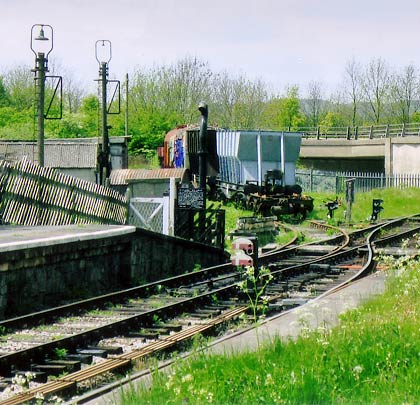
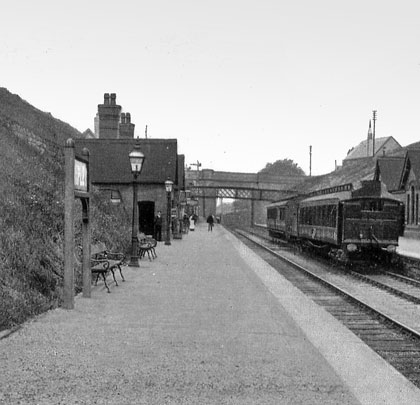
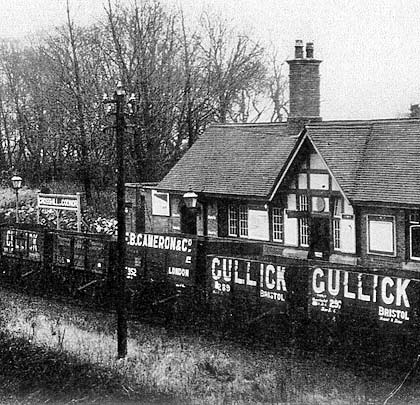
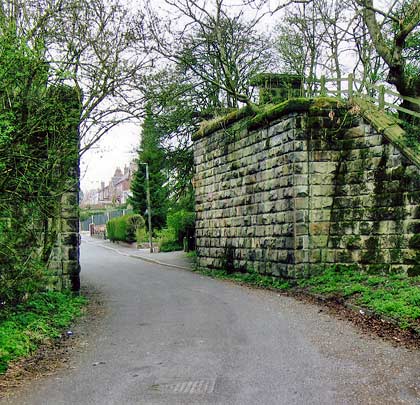
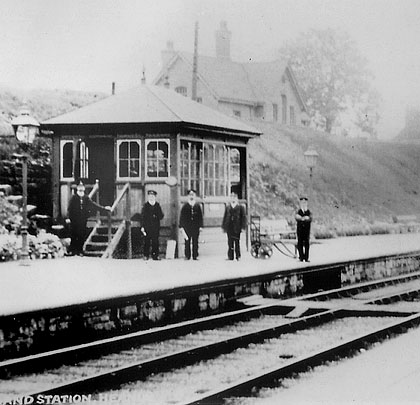
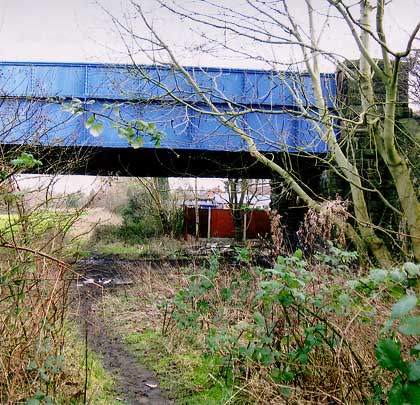
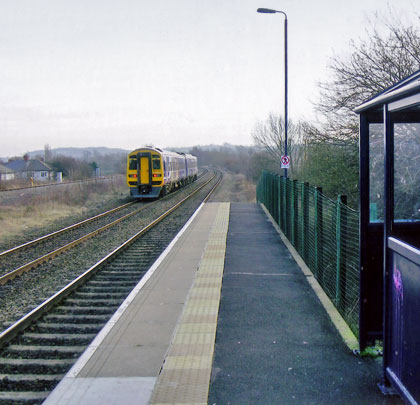







The opening of the railway to passenger traffic, between Butterley and Heanor, generated much local interest. Indeed records from the period show that interest was already manifesting itself before then. In March 1889, the Reverend Bates of St James Church, Crosshill, wrote to the Midland Railway to enquire when the station at Crosshill & Codnor would be erected. The railway company responded by informing him that it was not possible to fix a date but that it would be done in conjunction with construction of the line from the south. The example shows that the railway’s arrival was being awaited with much anticipation. We must not forget that some 18 years had passed since a railway from Butterley and Ripley to Heanor had first been proposed and it can only be speculated that the local community must have felt that it was long overdue.
The line between Butterley and Heanor was opened on 2nd June 1890 and was the cause for much local merriment. Throughout the Victorian period, communities the length and breadth of the country had celebrated the arrival of their railways. At this time, rail travel was the only realistic means of travelling any distance – something that a lot of people had been unable to do before. It therefore comes as no surprise to learn that the opening of the Butterley-Heanor branch was reported by the press. On 4th June 1890, the following article appeared in the Derby Mercury. It captures well the local sentiment.
The new line from Ripley to Heanor
The first train from Ripley to Codnor and Heanor via Ambergate at nine o’clock on Monday morning came into the Ripley Station at the appointed time. There was a large number of spectators there to witness the arrival. Several persons left by the train from Ripley for the purpose of having a ride and nothing more. On the arrival of the train at Codnor the railway bridge was crowded with spectators and the greatest interest was manifested. Some of the oldest inhabitants got into the train at Codnor Station apparently much pleased at having lived so long as to see a railway to Codnor. A number of school children got in at Codnor, for whom tickets could not be obtained, a sufficient number not having been provided. The train next proceeded to Heanor where some hundreds of persons had assembled to witness the novel proceedings. The return train at 9.54 to Ripley was again crowded. The Ripley and Heanor stations are both neat and commodious, and there is no doubt the branch line will pay the directors for the immense outlay they have made.
The new line was duly inspected on Saturday last, as is usual in such cases. An excellent service of trains has been arranged, and travellers from Chesterfield and the North, instead of having to journey to Derby and then come back a short distance and proceed along the Ripley branch, will have two routes open to them. They may travel by either Pye Bridge or Ambergate, thence along the Butterley branch, and then by the new Ripley and Heanor line. The service of trains is arranged on the following simple system:- Starting from Mansfield a train will run to Pye Bridge, thence to Butterley, then branching off to the left to Ripley, go forward through Cross Hill and Codnor to Heanor. Then it will run back from Heanor through Ripley to the Butterley Branch and – instead of going back to Pye Bridge and Mansfield – will go forward to Ambergate. From Ambergate the service will be exactly reversed, the trains after travelling to Ripley or Heanor running back to Pye Bridge and Mansfield. By this ingenious arrangement every place will be well served.
When the branch was opened, a service of four trains daily in each direction operated between Butterley and Heanor, with an additional evening service running on Saturdays only. Throughout its entire period of operation, there were never any timetabled Sunday services. The journey time for the five miles between the two stations was 16 minutes.

Courtesy: Midland Railway Society
When compiling information for this article I thought that it would be interesting to see whether the same journey today by road could be made in a shorter time than a train which operated over a century ago. Therefore, following a route which followed the course of the railway as closely as possible, and without making any unnecessary deviations, I departed from the forecourt of Butterley Station at 11:07, just as the train had done in June 1890. My arrival at the site of Heanor Station on Midland Road was at 11:21. In 1890, the 11:07 departure from Butterley arrived into Heanor at 11:23. If nothing else, the experiment proved that over a century later it would be difficult to complete the journey in a much shorter length of time. It does make one wonder though how long the journey would take during the morning and afternoon peak times.
The public timetable for May 1896 shows that, after the opening of the Langley Mill extension in October 1895, there were six trains a day between Butterley and Langley Mill, with a further two trains operating between Ripley and Langley Mill. In addition there was a Saturdays-only evening service between Ripley (dep 8:35pm) and Langley Mill (arr 8:50pm). In the Up direction there were seven trains between Langley Mill and Butterley, two between Langley Mill and Ripley and, on Saturdays only, two evening services from Langley Mill (dep 8:15pm and 8:55pm) to Ripley (arr 8:50pm & 9:20pm). A similar service ran for many of the following years with only slight variations, but these merit attention as they demonstrate well how the Midland Railway increased the number of destinations that could be reached from stations along the branch without the need for changing trains.
From the commencement of services in 1890, a number of services along the branch had either originated from or terminated at Ambergate and Pye Bridge, thus affording passengers access to two of the Midland’s principal routes – the Derby-Sheffield and Erewash Valley main lines respectively. However, towards the end of the Victorian period and throughout the Edwardian era, a number of services were run to destinations further afield or connected with other long-distance services.
An interesting train, demonstrating the above point well, may be seen in the MR’s public timetable for May and June 1900. A train departed Nottingham Midland at 3:25pm and proceeded along the Basford-Bennerley Junction branch, calling at all intermediate stations, to Ilkeston Town where it arrived at 4:02pm. The train proceeded to Langley Mill and then along the branch to Ripley where it arrived at 4:35pm. Finally, it travelled from Ripley via Butterley and Pye Bridge to Mansfield where it terminated at 4:51pm. In later years this service was run in a similar fashion, however from Ripley it continued to Chesterfield via Ambergate.
From 1900 onwards public timetables show that an additional train ran in each direction on Saturday lunchtimes. It is not possible to state with certainty why this was added but it is a reasonable possibility that, as many industries closed down at lunchtime on a Saturday, the extra trains were required to take workers back home. Such services were commonplace across the network and the adequate patronage of it on the Butterley-Langley Mill branch ensured it remained in the timetables right up until closure of the line.
One further development which occurred towards the latter end of the Edwardian period was the introduction of a service from Derby which ran to Ripley via Little Eaton, Coxbench, Kilburn and Denby, connecting with the train from Butterley to Langley Mill. This service may be seen in the timetable for July to September 1911 where a service departed Derby at 10:35am, calling at all intermediate stations to Ripley where arrival was at 11:06am. A connection could then be made with the 11:26am from Butterley, departing Ripley at 11:32am for all stations to Langley Mill where the train arrived at 11:46am.
By studying a majority of the branch’s public timetables, it becomes that the heyday for services along the line was the decade from 1900-1910. During this time the Midland Railway was clearly committed to the promotion of a viable and sustainable service along the branch, and passenger patronage was adequate. The single ticket from Heanor to Crosshill & Codnor dated 24th May 1906 is numbered 1100. This does not take into account the number of return tickets that would also have been issued for the same journey.

In addition to regular passenger services, the Edwardian period saw the popularity of excursion traffic increase. Like many railway companies at this time, the Midland was keen to promote this form of service as it was a lucrative and competitive revenue earner. The excursion offered local people the opportunity to have a day away to places, usually seaside destinations, that they would otherwise have been unable to reach and at affordable prices.
During the Edwardian period, the Heanor Baptist Sunday School ran regular August excursion trains to Blackpool. The handbill included with this article shows that such an excursion ran on Monday 15th August 1910, demonstrating that passengers certainly did get their money’s worth. Although not shown on the bill, arrival in Blackpool would have been at approximately 8:20am. Assuming similar journey times on the return journey, arrival back at Ripley would not have been until 2:20am and Langley Mill 2:40am.

Courtesy: Midland Railway Society
Another handbill exists for an excursion which was scheduled to run on Monday 10th August 1914. The arrangements were slightly different with the train running in two portions to Ripley. The first departed Heanor at 4:00am, called at Crosshill & Codnor at 4:03am and arrived in Ripley at 4:12am. Here this portion was attached to that which left Langley Mill at 4:05am, calling at Heanor at 4:10am – but not Crosshill & Codnor – to arrive in Ripley at 4:25am. The object of this would undoubtedly have been to convey more coaches than would have been possible due to the restricted length of the branch platform at Langley Mill. The combined train left Ripley to call at Butterley at 4:35am and Ambergate at 4:48am, with arrival at Blackpool being at 8:10am. The fares were also slightly higher on this occasion. For the 1, 2, 3, 4, 5 and 6-day trips, the fare was 5/, 8/6 and 9/6 respectively, whilst the 8 or 15-day fares varied according to the station, being 13/6 from Langley Mill, Heanor and Crosshill & Codnor, and 13/3 from Ripley, 12/9 from Butterley and 12/6 from Ambergate. However, it is almost certain that this particular trip did not take place. Following the declaration of war on 4th August 1914, the government took control of the main line railways and all excursion traffic was immediately suspended.
The Heanor Urban District Council yearbook for 1905-1906 shows that the local authority also took a keen interest in the railway, requesting amendments to services along the line. History does not record whether these were an expression of dissatisfaction with the existing level of provision or if they were made following requests made by regular rail users who felt that changes would be beneficial to them. What is certain is that the council wrote to the Midland Railway on 1st November 1905 requesting:
That a train be run from Ripley, through Codnor and Heanor to Langley Mill to connect with the 8.42am Langley Mill to Nottingham service.
That the train leaving Sheffield at 4.00pm be stopped at Pye Bridge or Langley Mill so as to connect with the train leaving Pye Bridge at 5.02pm or Langley Mill at 5.12pm.
That an extra train be put on from Langley Mill to Heanor and Ripley in connection with the 6.07pm from Nottingham and that this train be run back from Ripley to connect with the train arriving at Langley Mill at 8.08pm; also that one of these trains be accelerated. Further, that a train be run from Langley Mill to Heanor and Ripley on Saturdays to connect with the 9.25pm from Nottingham, arriving at Langley Mill at 10.22pm.
By the end of the yearbook in question (March 1906), no response had been received from the Midland Railway. It is impossible to speculate whether this demonstrates a nonchalant approach towards the branch or whether it was simply not possible to make alterations to the timetable after publication. It does however prove that, at this particular point in history, there was sufficient interest in local rail services to warrant the town council making contact with the railway company. This view is further reinforced by the fact that, during the same period, Heanor Urban District Council also made contact with the Great Northern with a similar number of requests for service improvements on its branch between Heanor and Ilkeston.
If the years of the Edwardian period marked the peak of prosperity for the Butterley-Langley Mill line then the years that followed marked the onset of a rapid decline in both service provision and passenger patronage. Surprisingly it was two developments which occurred within the space of just 12 months that were to rob the branch of its raison d’être and ultimately lead to its premature closure.
© Simon Swain 2011
 April 2011
April 2011




